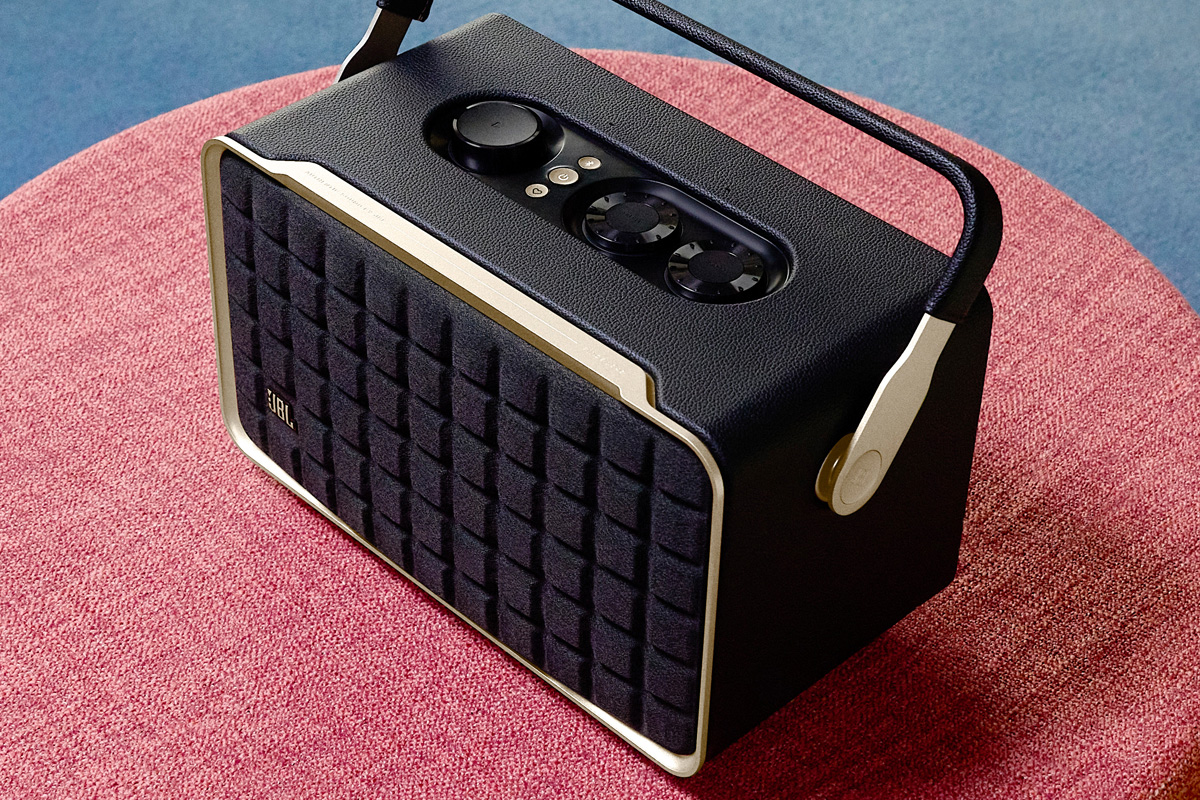It was a few minutes past 5 p.m. on the last day of winter in the northern hemisphere, and I was sitting in an Adirondack chair on my second-floor deck enjoying a crisp sauvignon blanc from the southern hemisphere. I’d been aching for some outdoor lounging ever since the temperatures first started plunging last November. With the daytime high reaching 66°F, this was my chance.
Believe it or not, I was working. Right beside me was JBL’s Authentics 300 music system ($449.95, all prices in USD), the subject of this review, and it was playing “Spanish Song” by the Chick Corea Trio from their most recent live-concert compilation, Trilogy 3. It sounded really nice. I’ll go into more detail in the Listening section. For the time being, I’ll just say that I’d have happily poured myself a second glass of that Kiwi wine and listened to the whole album if I hadn’t been pressed for time.
Inside and out
The Authentics 300 is the middle model in JBL’s Authentics lineup of portable music systems. Like the 300, the smaller Authentics 200 ($349.95) and larger Authentics 500 ($699.95) feature retro styling that is unmistakably JBL, starting with the black Quadrex foam grilles on the fronts. Each grille is surrounded by a light-gold metal frame. The top, sides, and bottom are covered with a black, pebbled, leatherlike material. The 300 has a carrying handle covered with the same material, with beige stitching along one edge. The bottom parts of the handle where it fastens to the sides have the same light-gold metal as the frame around the grille.
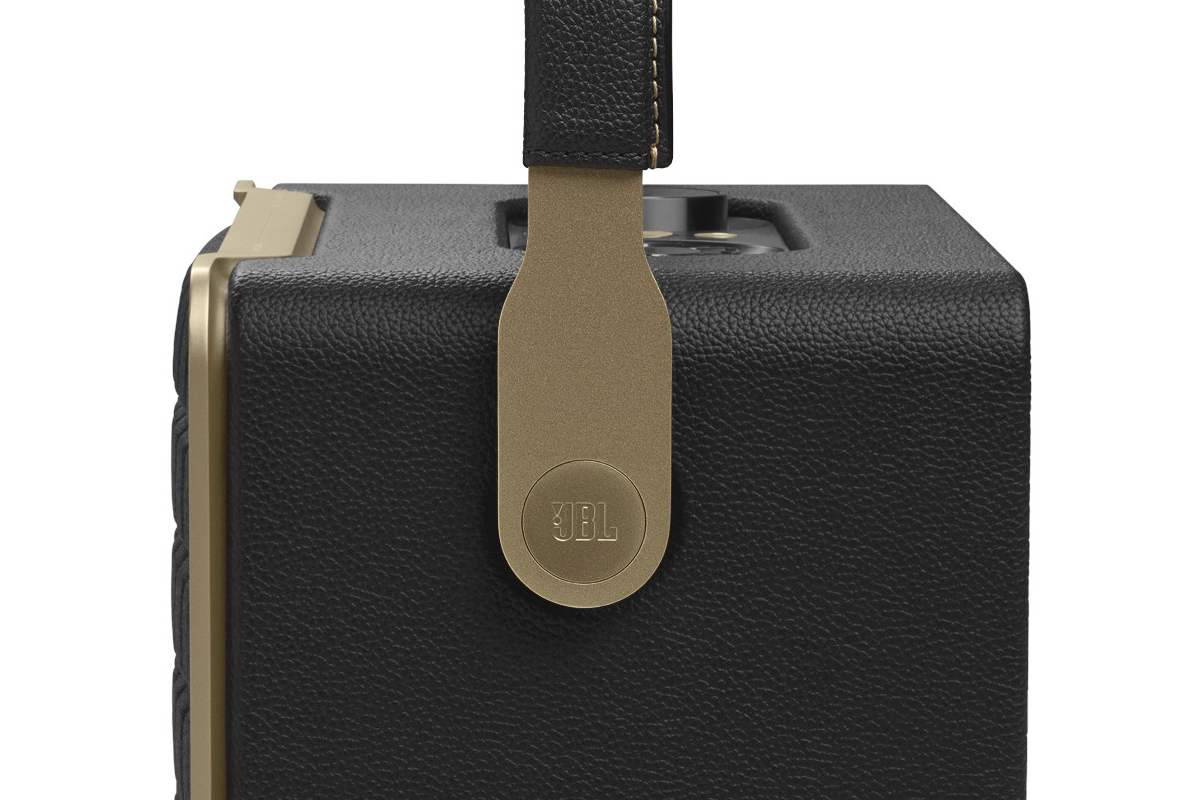
The feature set is identical for all three models, starting with a built-in battery rated for up to eight hours of playback time per charge. That’s how I was able to listen to the Corea track out on my deck. All have Bluetooth, dual-band Wi-Fi, and ethernet connectivity, and a Roon Ready streamer that supports Apple AirPlay 2, Chromecast, Spotify Connect, Tidal Connect, and UPnP/DLNA. The companion JBL One app provides access to Amazon Music, Napster, Qobuz, Tidal, Calm Radio, iHeartRadio, and TuneIn internet radio. Maximum resolution is 24-bit/48kHz. All three models feature Amazon Alexa and Google Assistant voice control. Both voice assistants can be running simultaneously.
The main differences between the three models involve the speaker complement, amplifier output, size, and weight. The Authentics 300 weighs 10.8 pounds and measures 7.7″H × 13.5″W × 7.1″D. Inside is an amplifier rated at 100W maximum at 1% THD, powering two 1″ tweeters, one on each side of the front baffle, and a shared 5.25″ midrange-woofer, which is augmented by a downfiring 3.5″ × 7″ passive radiator (the web page and product sheet erroneously state that the Authentics 300 has a 6.5″ passive radiator). Specified frequency response is 45Hz–20kHz, ‑6dB.
At the top-center of the back panel is a switch that enables the built-in microphone that is used for Amazon Alexa and Google Assistant voice control and for the player’s auto-EQ feature. Further down is a jack panel with an ethernet port, a 3.5mm line-level analog input, a USB-C port, and a two-prong inlet for the supplied power cord. The USB port is used for service. With the US version, it can also be used for connecting a portable drive containing MP3 or WAV files (other file formats are not supported).
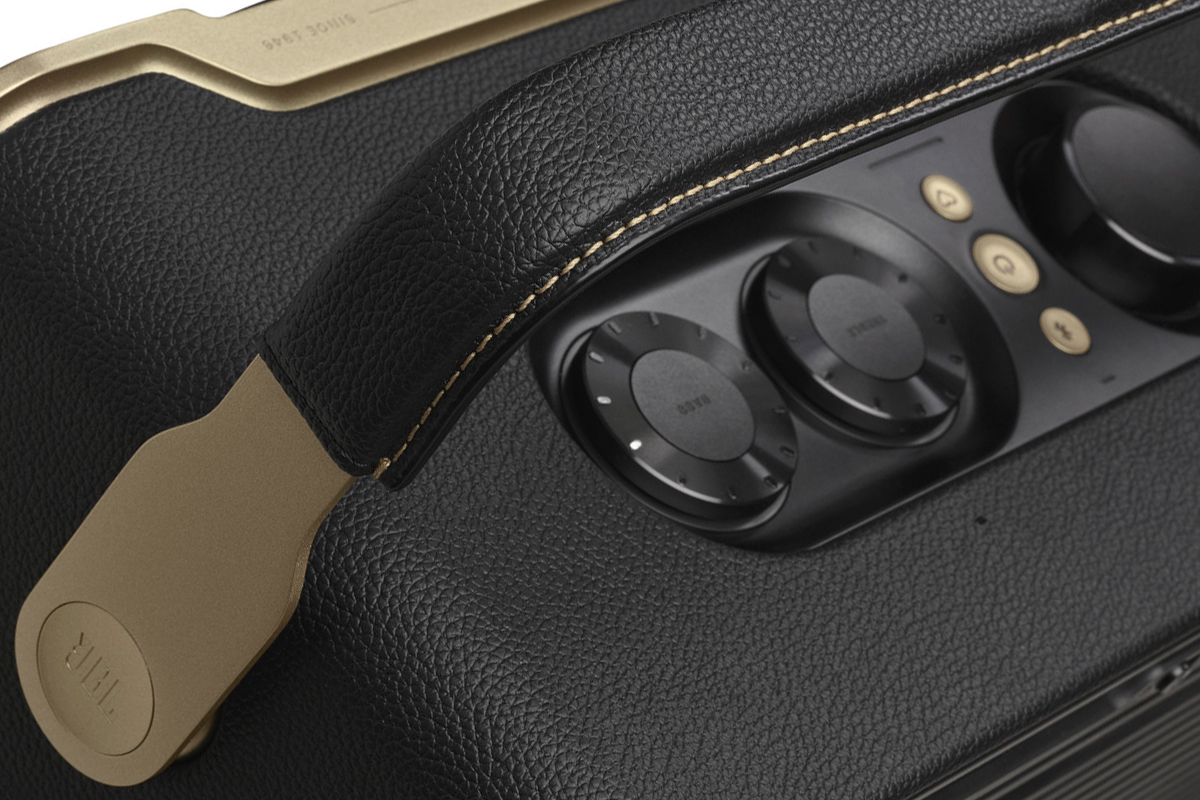
The top panel has a large rotary volume control, with a center button that can be used to pause and resume playback and skip tracks. To its right are three buttons—one for Bluetooth pairing and playback, one for power on/off, and one for the “Moment” feature. This provides instant access to ambient sounds such as “Forest” and “Ocean,” which you select in the JBL One app. You can also designate a playlist or internet radio station to begin playing when you press the Moment button. Further to the right are rotary treble and bass controls. On their perimeters are indicators that light up to show the settings.
Setup and software
The Authentics 300 comes with an illustrated Quick Start Guide that provides basic information about setup and day-to-day use. If you need more information, JBL has a full manual online.
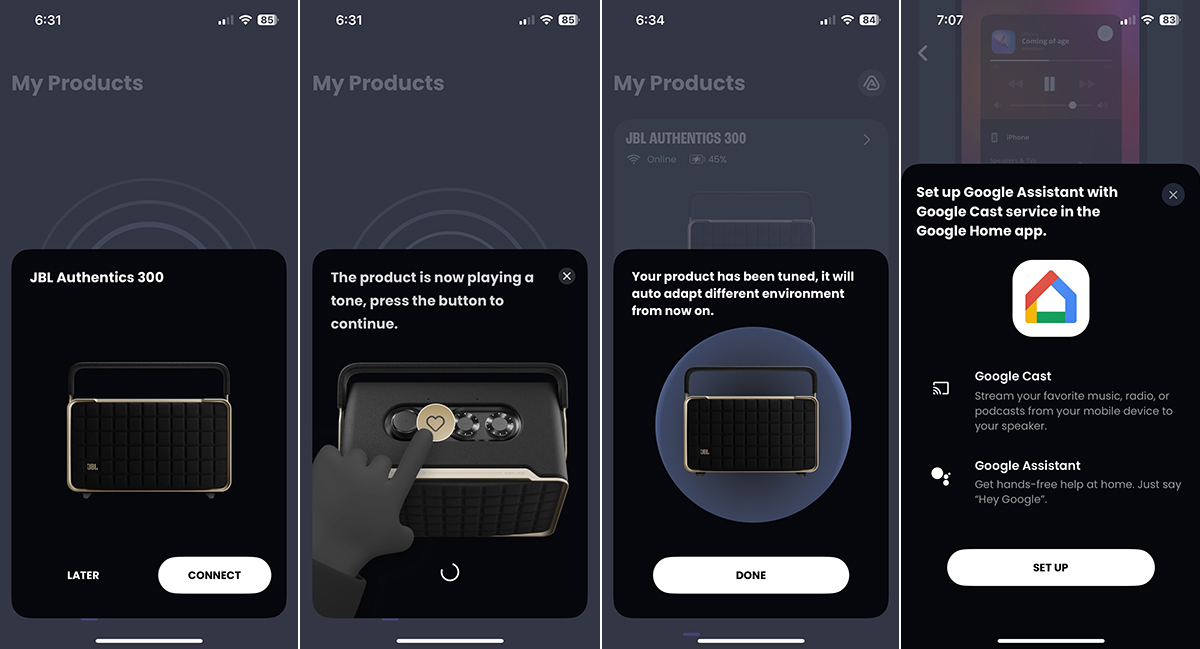
The Quick Start Guide includes a QR code for downloading the JBL One app. A few seconds after I fired up the app on my iPhone 14, it found the player and presented a Connect option, which I chose. The app played a sound through the speaker, asked me to confirm that I’d heard it, and then connected me to the same network I was using with my iPhone. Piece of cake. I repeated the process on my Google Pixel 4a 5G Android phone, and it went just as smoothly. After connecting to my network, the app played another sound through the system to adapt its output to the environment. This is one of the easiest setup processes I’ve ever encountered.
I found the app well designed and easy to navigate. It includes links that guide you through the process of setting up the Amazon Alexa and Google Assistant voice controls. An equalizer feature lets you choose from four presets (JBL Signature, Vocal, Energetic, and Chill); however, the app does not show how these settings affect the sound. There is a fifth option, Customize, which lets you adjust output on seven frequency bands. I selected this option and left all controls in the flat position for almost all of my listening. And I left the bass and treble controls on the player in the flat positions as well.
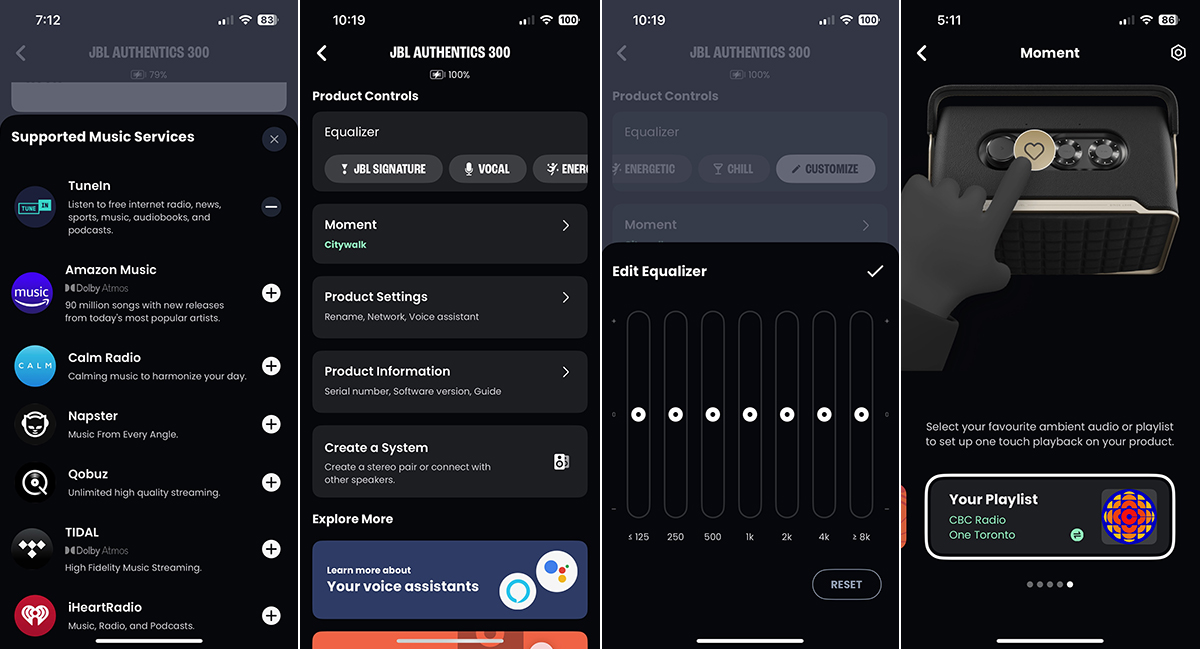
One criticism: the voices for Alexa and the Google Assistant are played at the current volume setting for the player. So if you’ve been playing music loud and you use one of the assistants, the voice response will also be very loud. It would be nice if there was a way to set a default volume level for the voice assistant. On the plus side, the JBL player always responded to my voice prompts, even if I was playing music loudly.
Also worth noting: if the Authentics 300 is not connected to power, when it goes into sleep mode, it disappears as an available streaming device. This is to keep the battery from running down. If you want to stream using AirPlay, Chromecast, Roon, UPnP, or the JBL One app when the player is running on battery power, you have to manually power it up first. If the player is plugged in, it will automatically wake up when it receives a stream over your home network, just as pretty much all streaming components do.
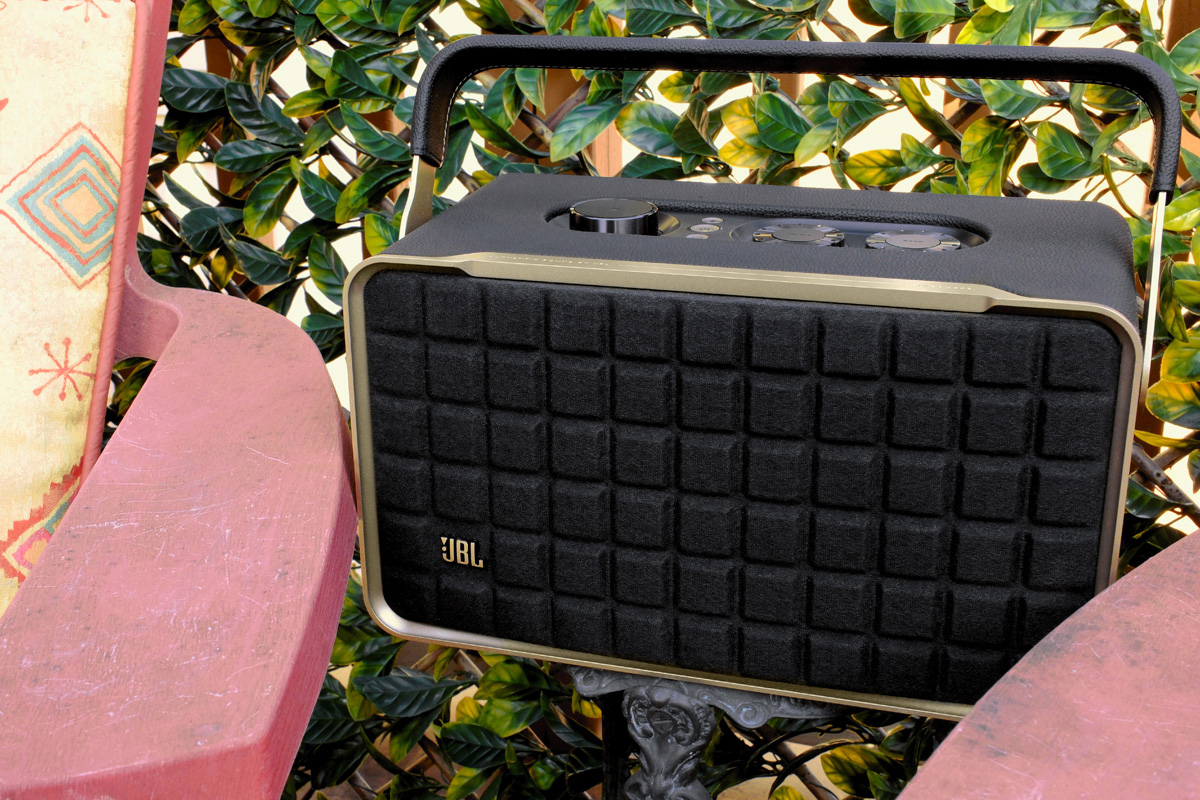
During the review period, I streamed to the JBL player using AirPlay, Chromecast, Roon, and UPnP. Chromecast does not support gapless playback, so as happens on almost all Chromecast devices, there was a gap of about five seconds between each track. I don’t fault JBL for that—it’s a flaw of Chromecast. All the other protocols worked fine. For almost all of my listening, I used Roon to play music from Qobuz and my own music library—in my home office, downstairs in the kitchen, and out on the deck.
Listening
Which brings me back to my pre-spring outdoor listening session. On “Spanish Song” from Trilogy 3 (24-bit/96kHz FLAC, Candid Records / Qobuz), Chick Corea’s piano runs and arpeggios were nicely articulated without seeming etched, and the timbre of his piano was convincing from bottom to top. Through the JBL system, it was easy to appreciate his deft touch during legato phrases. Brian Blade’s snare rolls had impressive snap and texture. Christian McBride’s double-bass plucks had good attack, followed by delicious woody resonance. While I found the lowest notes a tad indistinct, they were surprisingly robust.
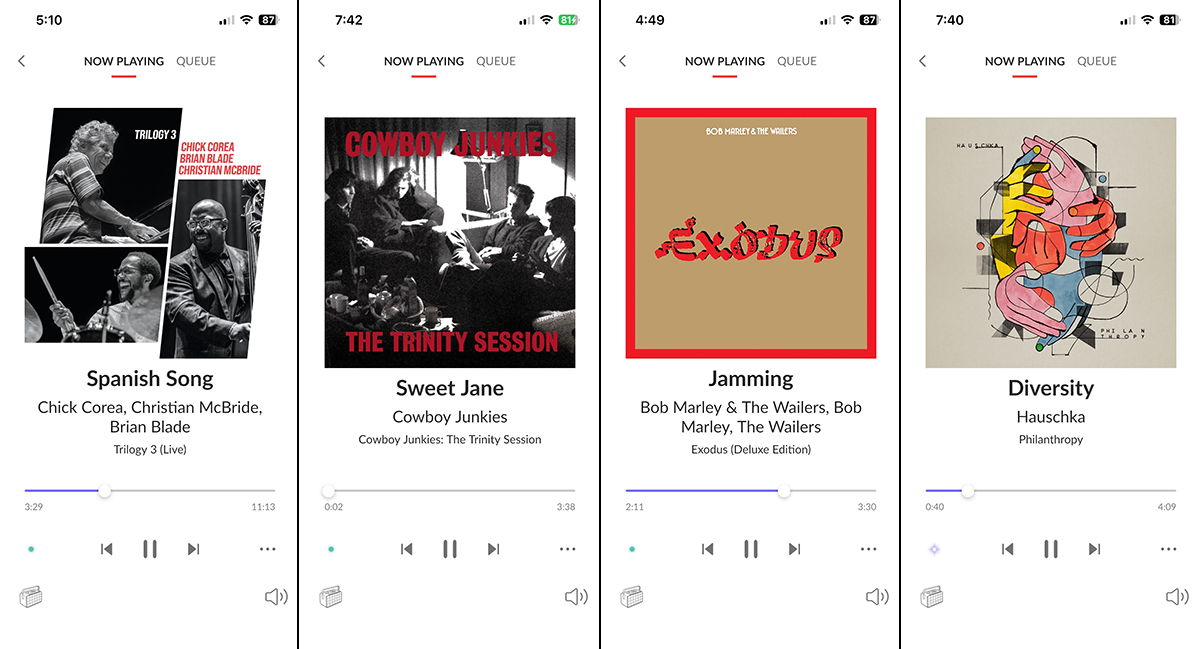
I played this song with the volume about two-thirds of the way up. Even though this little system was playing outside, where it was not benefiting from room gain, it was loud enough to be fun. I heard no sense of strain, but was aware of slight dynamic compression. When I goosed the volume further, approaching piss-off-the-neighbors levels, the sound got a little hard.
After my outdoor concert, I placed the JBL system on a small table in my home office, right next to my Roon Nucleus One server. One of the first tracks I played was Cowboy Junkies’ cover of the Velvet Underground’s “Sweet Jane,” from The Trinity Session (16/44.1 FLAC, RCA / Qobuz). Even though I wasn’t experiencing real stereo through this little system, it provided a good sense of the reverberant acoustics in Toronto’s Church of the Holy Trinity, though the sound was somewhat cavernous. During the verses, where Margo Timmins sings quietly, her voice sounded very natural, except for one issue. On this recording, her sibilants are rather hot, but through the Authentics player, they were downright piercing. I could tame this somewhat by dialing back the treble or by using the EQ feature in the JBL app. Similarly, Peter Timmins’s cymbal and hi-hat strikes had too much sizzle. Otherwise, the JBL player did a fine job reproducing his drum kit. I really enjoyed the way the Authentics 300 conveyed the harmonic richness of Michael Timmins’s electric guitar. Alan Anton’s bass guitar had amazing punch, coming from such a small system.
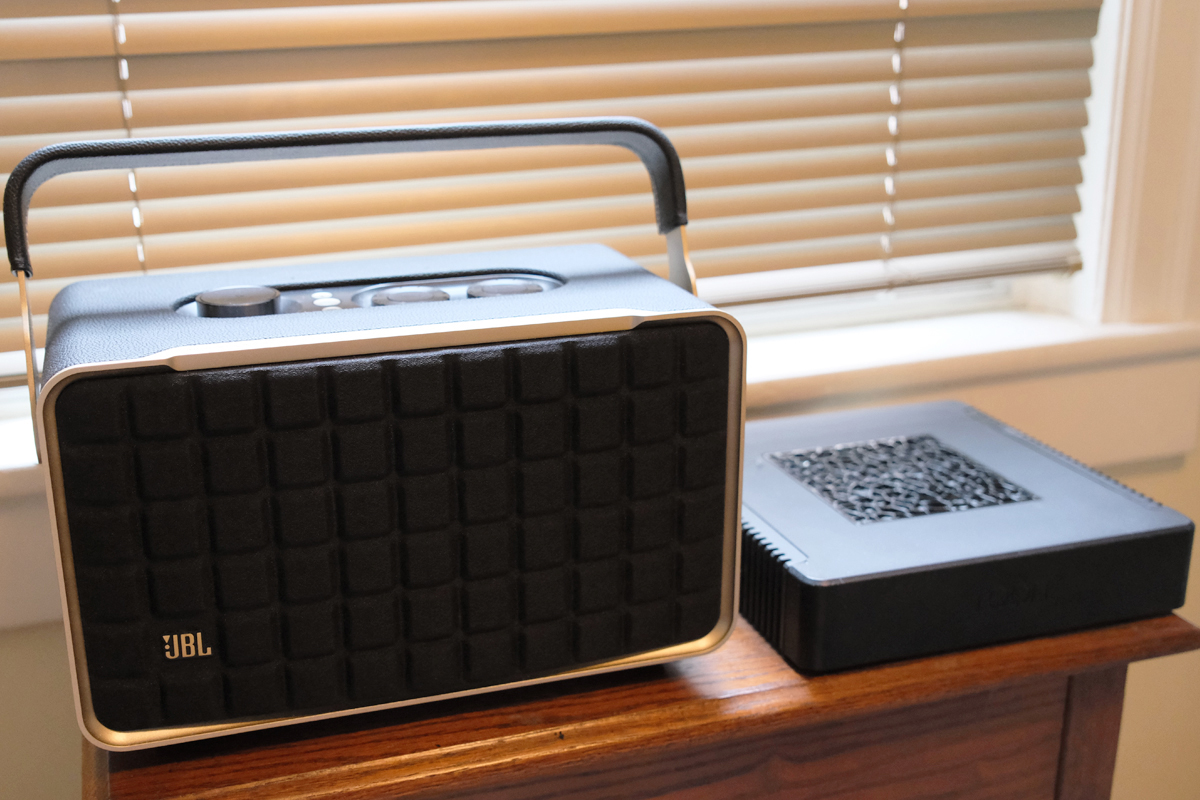
I noticed similar strengths and flaws in “Jamming,” from Exodus (Deluxe Edition) by Bob Marley & the Wailers (24/96 FLAC, Tuff Gong / Qobuz). Cymbal strikes and other high-pitched percussive sounds had a little too much sizzle, some of the slashing reggae guitar chords were a little harsh, and the voices of the female backup singers had a slight papery edge. But Marley’s voice was pretty well perfect. Aston “Family Man” Barrett’s bass guitar just pounded, giving the song irresistible momentum.
Later in the review period, I hauled the Authentics 300 downstairs to my kitchen so I could enjoy some music while preparing dinner. Playing “Diversity” from the latest album by the German keyboardist-composer Hauschka (aka Volker Bertelmann), Philanthropy (24/48 FLAC, City Slang / Qobuz), the JBL player filled the kitchen with big, glorious sound. Hauschka’s tinkling keyboard notes were nicely articulated, and the percussive effects were crisp and precise. The deep, pounding synth notes were impressively powerful, though slightly boomy.
Comparison
I compared the Authentics 300 with the Bluesound Pulse M tabletop music system ($449), which I reviewed in February 2024. While the two systems are identically priced, they have very different styling and somewhat different feature sets. The Pulse M does not have a battery, but it has five programmable presets, instead of just one.
For this comparison, I placed the Pulse M on the same table in my home office that I used for the Authentics 300, matched their levels using pink noise and a sound-pressure meter, and then played some more tracks from the Chick Corea album.
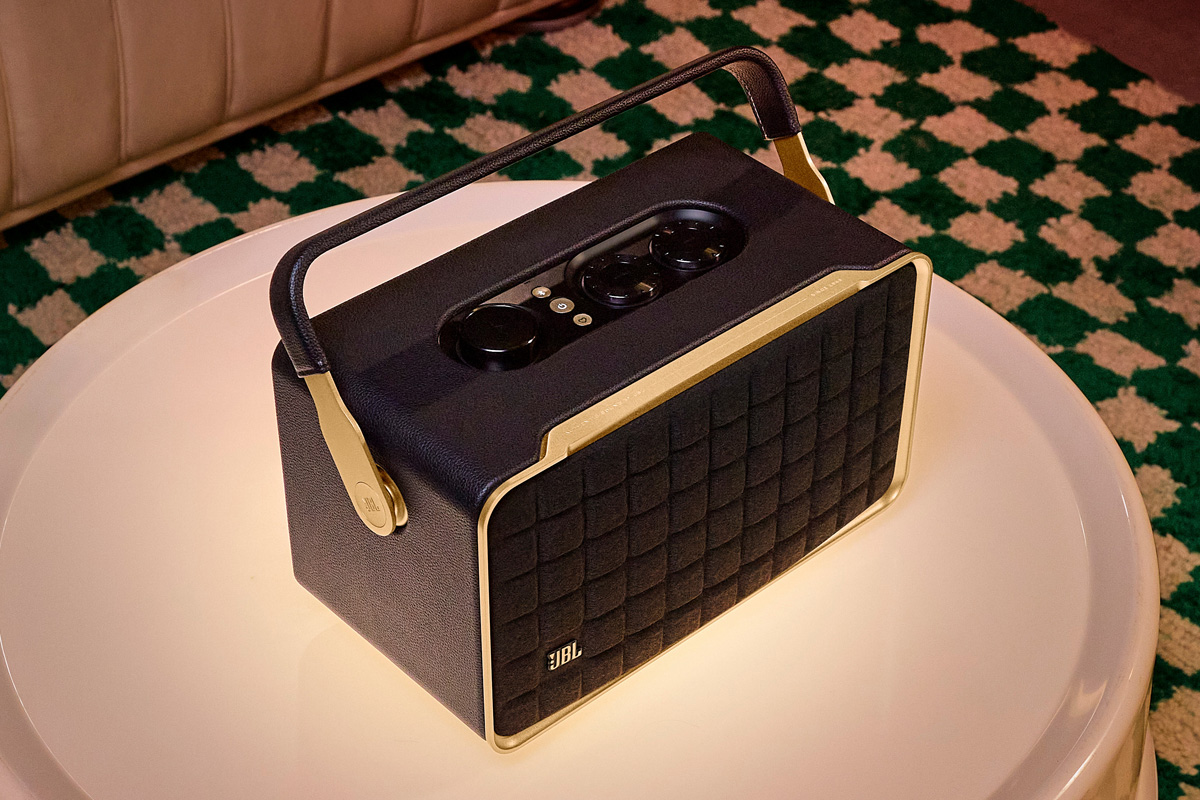
Through the Bluesound player, the lowest notes of Christian McBride’s double bass were fainter than they were through the JBL, but notes on the middle and upper strings sounded richer. Brian Blade’s kick-drum and floor-tom strokes had greater power and palpability on the JBL player, but snare-drum strikes sounded more aggressive and cymbal strikes more sizzly. Corea’s right-hand notes and chords had more sparkle on the JBL player, but sounded fuller and richer on the Bluesound. During busy passages, the Pulse M sounded a little more congested, and dynamics were more compressed. Overall, I found the JBL player more exciting to listen to, but the Bluesound was more neutral and easier on the ears.
Conclusion
It might seem odd for an audiophile website to be reviewing a portable music player like the Authentics 300. But as my listening examples illustrate, such a component can be a very nice adjunct for a serious hi-fi system, because it lets you enjoy music when you can’t be parked in front of your speakers. The ability to use voice controls to turn on lights and adjust the thermostat is a welcome bonus.
That’s just one use case, but there are many others. For example, an Authentics player would be a great addition to a teenager’s bedroom or a student’s dorm room.
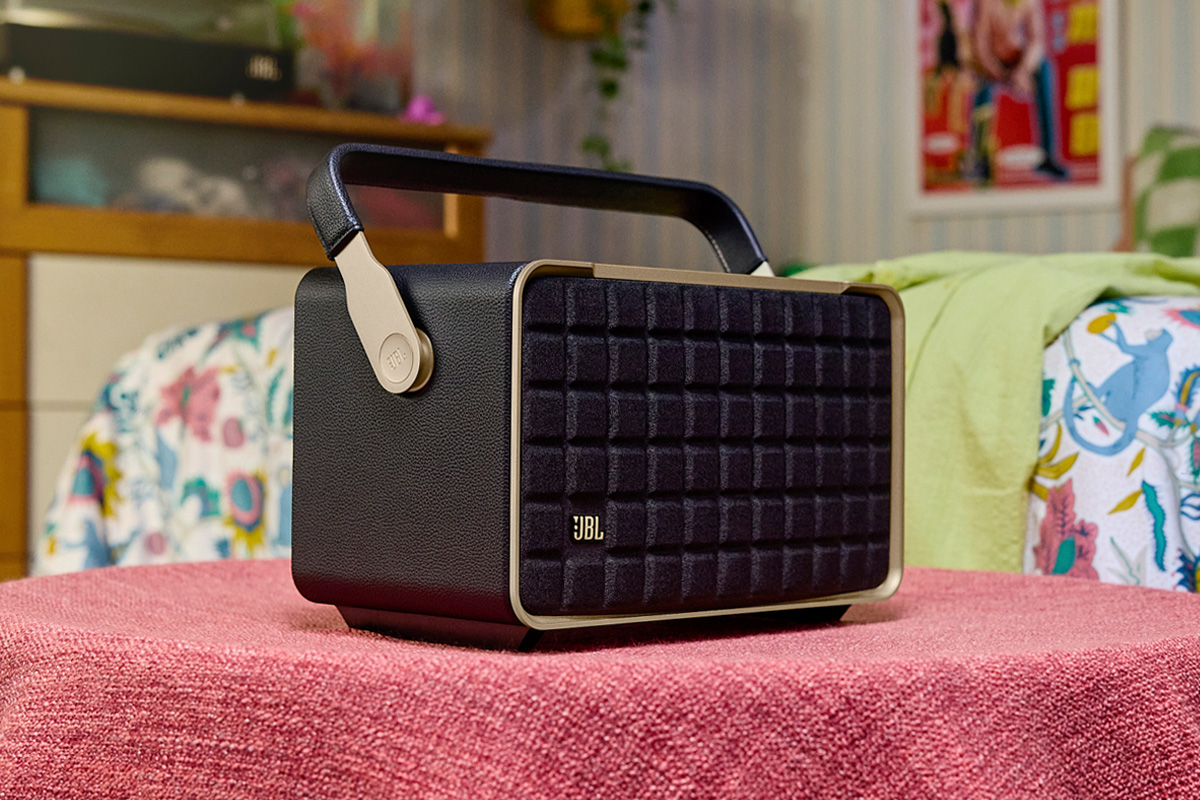
I love the industrial design of JBL’s Authentics series. And I really enjoyed listening to the Authentics 300. I’ve mentioned some sonic shortcomings: treble is sometimes too aggressive, and midrange a bit hollowed-out. But the Authentics 300 system can play louder and dig deeper than you’d expect. It’s definitely worth a look for anyone who wants to enjoy music anywhere in the house—or outside on the deck.
. . . Gordon Brockhouse
Associated Equipment
- Streaming music system: Bluesound Pulse M
- Sources and control devices: Apple iPhone 14, Google Pixel 4a 5G, HP Spectre x360 notebook PC, Apple MacBook Pro (2023, M3), Roon Nucleus One
- Network: Google Wifi four-node mesh network
JBL Authentics 300 portable music system
Price: $449.95
Warranty: One year, parts and labor
JBL
Harman International Industries, Inc.
8500 Balboa Boulevard
Northridge, CA 91329
Phone: 1-800-336-4525
Website: www.jbl.com





